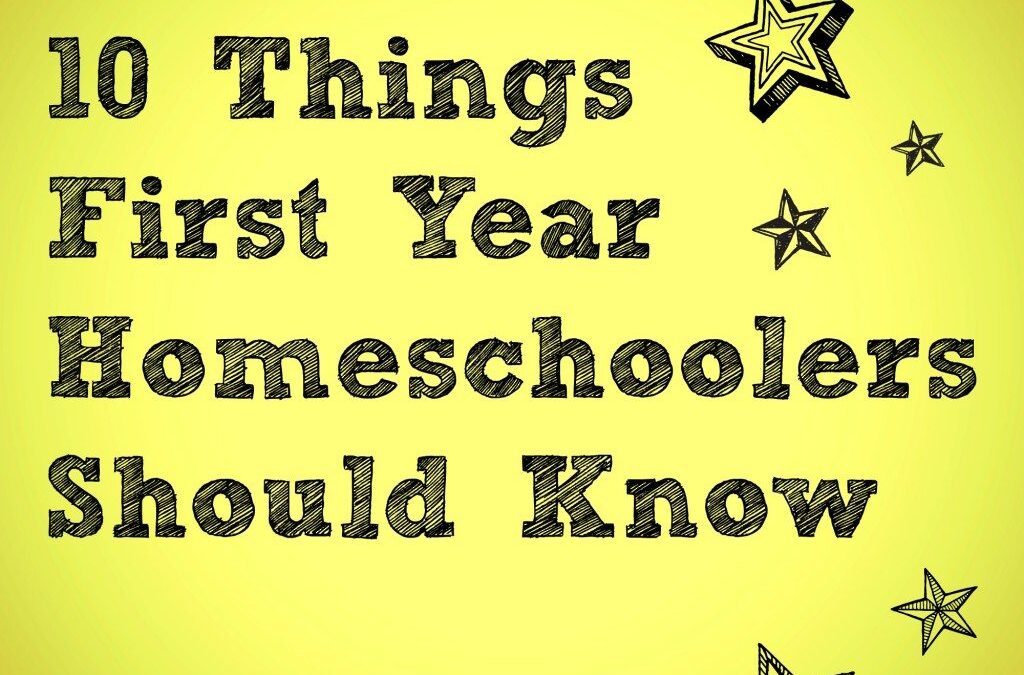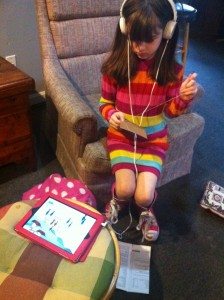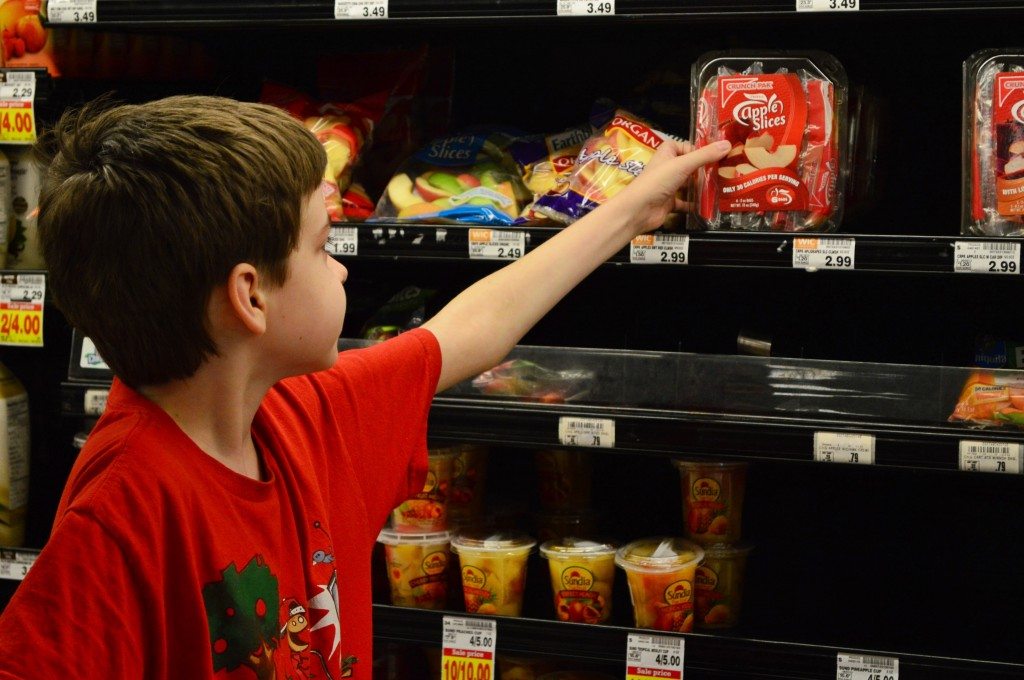We did it. We survived the first year! We pieced our way through, and came out the other side in one piece. For the most part.
I have to tell you, it was a LOT of work. It wasn’t always easy. The things that I thought were going to be a slam dunk, well…they weren’t. The things I was most worried about tended to be easier than I imagined. We dumped curriculum, picked up new ones, tried lots of different things. What I thought I knew at the beginning of the year was not what I thought at the end of the year.
And through all of that, I still have to say this: it has been the best decision we have ever made as parents.
Homeschooling is tough. It isn’t for wimps. But the benefits are pretty spectacular. My kids and I have a pretty awesome relationship now. We laugh together. We are curious together. We learn together. That’s right, I make sure they see me learning right along with them. I am tough and play the teacher role too, but mostly we learn together.
We are three weeks into our second year, so I thought I would sit down and write out the things I want first-year homeschoolers to know.
There are a million ways to ‘Do School.’ There is no wrong way to do it. Well, there are, but if you are researching homeschooling then likely you aren’t being lazy or taking the neglectful way out. So whether it is unschooling or relaxed homeschooling, eclectic or structured curriculum, Charlotte Mason or Classical, there is no wrong way to do it. We began last year with an online curriculum. It helped my kids transition from the routine and structure of public school into the self-teaching method of homeschooling. It was a great fit for about two months, at which point we had a better footing on what WE wanted schooling to look like. We began eclectic homeschooling, using multiple sources and ideas for our school time. By December we had begun a transition to inquiry based learning, using project based learning sources across the web. We are fully inquiry-based this year.
Deschooling is important if they were in public schools. In most public schools they are consumers of education. In homeschool the goal is usually to help them become self-directed learners. This is not an instant or easy transition. Some people define deschooling as just letting kids do whatever they want. That wouldn’t work for us. Both of my kids needed help transitioning from the consumer method of learning to the self-directed method. We did this by having an hour set aside every day just for self-directed learning. Their morning work was core work, on the computer, that was lead by the curriculum. (We used Time4Learning and/or Khan Academy.) But in the afternoon we had an hour set aside for them to choose their work: Learning games. Recreating ancient cities in Minecraft. Researching and completing projects. (LittleMissSunshine researched backpacking and planned an entire trip for the family.) Music lessons. Computer programming classes. All of these and many others allowed them to take control of their schooling. We began to creep that into other parts of our schedule, with JD teaching us about Kentucky history, or watching TED Talks together and discussing the ideas from the talk. By mid-October we had ditched Time4Learning and by January they were for the most part doing their schoolwork on their own, using their resources to teach themselves.
Schedules or Routines help. I understand unschooling, and I think it is great. I hear a lot from other homeschool moms that they love the flexibility of homeschooling. But I also hear a lot of gripes from them about how hard it is to get their kids to transition into “school time” or to do their work. This is where I am a huge fan of schedules and routines. I am ADHD. My kids are both ADHD. My parents were hippies and I lean that way myself. Trust me, if ever there was a family that doesn’t like being told what to do and when, it is us! But schedules and routines have proved to be invaluable the past year. My kids appreciate it because they like knowing what is expected of them. There was no arguing by my kids when it was time to do their work. They understood when was their free time, and when was time to do their work. I didn’t have to stand over them, arguing with them or cajoling them out of playtime and into school time. In fact, our routine gave me a lot more freedom to blend the two together. Let me say that again–our schedule and routine didn’t take away mine or my kids’ freedom, it added to it. We each knew what was expected from us, and when, and could use that as a basic framework. I knew that mom playtime was here, and mom worktime was there. I knew I had built in time to the day to do my housework, my teaching work, and my own free time to read, to garden, to play on Facebook. My kids had the same. They had time to play Minecraft, to watch YouTube videos, but they also had time to do their work. I’m sharing our routine below for newbies so you can kind of see what worked for us. Within our schedule the kids had flexibility to choose their own activities. For example, within “core work” time, they knew what they needed to complete each week–but they were free to choose which days they completed it. If they wanted to knock out a week’s worth of math at once and be done with it, they could. If they wanted to parcel it out, a little each day, they could. It was up to them, and this gave them a lot of freedom within our structured framework. You’ll notice our day begins with a family walk. This is by design, as it is a clear line between free time, and school time. (It also counts as PE!)
9 a.m.–Dressed and downstairs for breakfast and morning chores
10 a.m.–School begins with a morning family walk
10:30 a.m.–CNN Student News
10:45 a.m.–Journaling time
10:50 a.m.–Core work time (Math, science, social studies, spelling, etc.)
12:00 p.m.–Lunch!
1:00 p.m.–TED Talk
1:20 p.m.–Literature/read aloud time
1:45 p.m.–Self-directed study time
2:45 p.m.–School ends
You don’t have to recreate the public school classroom at home. For most of us, the public school model of schooling is the only one we have ever known. Doing it differently is enticing, but scary, and often we revert to the methods we see everyone else using. Desks, notebooks, textbooks, and lots and lots of worksheets. Moms become teachers, lecturing and instructing their children on a daily basis. Moms burn out, kids rebel, and we wonder why we aren’t having any fun yet. Don’t be afraid to change things, to sit on the couch or to get up and play. I researched and used a lot of Montessori methods last year during our math and language arts time, which really helped us grow and learn about our own learning styles.
Don’t marry a curriculum. There are thousands upon thousands of curriculums, and each one seems to be pricier than the next. If you ask in a group of homeschoolers which is best, you will get an avalanche of options–but a few are bantered about as THE best. Saxon math. Teaching Textbooks. Abeka. Sonlight. Honestly? There is no one size fits all curriculum. The one that works for my best friend and her kids is not the one that works for us. If you get into a curriculum and find it isn’t a good fit, don’t be afraid to change. Kids are flexible. You aren’t a failure for needing something new. This is actually a great lesson for the kids in self-education–sometimes you need to try multiple things before you find the information you need to learn the skills. I went through a couple of different math curriculums before we found the ones that were our best fit. We started with Time4Learning, moved to Khan Academy (which we still love and use for testing) but when we stumbled up on Life of Fred, we were hooked! Now both kids use it and love it. It is okay to try new things, sell the old, and move forward.
Take advantage of your surroundings. One of the beautiful parts of homeschooling is that you don’t need to fill out tons of forms and jump through hoops to schedule field trips or to take advantage of one of a kind events. Last winter with the brutal cold we took the opportunity to do several science experiments out in the cold. We took a couple of field trips out to local historical sites, participated in letterboxing, and took in cultural events. Check with your local ballet and theatre for homeschool days–Cincinnati has a great arts community with lots of resources open to us. I bet your city does too, if you just ask!
Build rest into your schedule. I know people saw me say “schedule” and “routine” and instantly thought I am a slave driver. But the opposite is true. We are very intentional around here, giving lots of opportunities for rest and free time throughout the week. We start the day slowly, with free time until school starts. We have an hour break in the middle of the day, and I make the kids (and myself) away from schoolwork for that time. We end early enough that they have a little free time to themselves before their friends come off the school bus. And then if they have finished their core work assignments for the week, then we take Fridays off for field trips, errands and other fun. As a society we tend to see being busy as a good thing, as if it makes us more valuable or important. But truthfully, it just makes us more burnt out. So make sure to schedule free time, and then use it. Moms, I’m talking to you, too. Even if it is only 15 minutes a day, schedule yourself some quiet time. I know, you’re busy and have no time for that. But you NEED it. Especially as a homeschooler. Schedule it and make yourself take it. It is for you, for your health. And it is for your kids, as they will mimic what they see you doing. There were many times in the last year where I had hit the wall, and I needed Fridays just to have some time to myself and restore my peace. Save your sanity, and build in free time.
Find a co-op. Co-ops are great for classes, but they are also a great lifeline for you. As a new homeschooler, you are constantly wondering if you are doing it “right.” My co-op has helped me to understand that I am doing well. They have been a great support, a lifeline of resources, and a great group of women to laugh with when things go horribly wrong. They have all been there, done that! Your kids will also enjoy the social time, and the chance to learn from other people. Our co-op has done some amazing projects, like the Shakespeare Company they assembled last year.
Take a monthly meeting with your kids. This was invaluable for us. Every month we’d sit down with the kids and ask them questions: What do you like? What could we be doing better? What do you wish never to do again? What would you like to do more of? How can I be a better teacher? What haven’t we done that you would like to try? Then we would turn the tables, and I would give them a fair assessment of their behavior and schoolwork. It helps to clear the air, bring out new ideas, and learn what is working and what isn’t. It also helped the kids feel like they have a part to play in their education. Now, there are non-negotiables. But for the most part, the kids were able to feel like they were being heard, and that their ideas mattered.
Relax. Be flexible. Take a deep breath, and step back from the panic. That fear that you are going to screw up your kids? I know that one, very well. Here’s what I learned the first year: I will make mistakes, but all teachers do. My kids aren’t screwed up because of it. In fact, after spending a year in homeschool world and then running into a lot of the public school kids in the neighborhood, I am pretty sure my kids are better off. So relax. And be flexible–learning can happen in so many ways. Sometimes life throws us curveballs and we need to roll with the punches. We have desks but they are more storage spaces than anything. The kids are just as likely to be doing their work on the couch or in the papasan (or even sitting on the floor) as they are at their desks. We’ve done schoolwork in hotel rooms, in hospital waiting rooms, even in the car on long-distance road trips. When we were trying to sell our house we often had showings in the middle of the school day, so we’d take lessons to the grocery store, to Starbucks, the library…we went wherever we could find a spot. We stick to our routine but sometimes everyone needs a break or a change of scenery. Don’t be afraid to change the schedule if you need to. It is YOUR school, set it up the way that works for YOU. You are going to do a great job!
Are you a homeschooler? What tip would you leave for a newbie? Share them in the comments below!
























You must be logged in to post a comment.